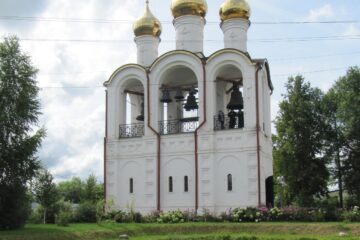 The Gospel of Mark, which is the shortest of the four Gospels, begins and ends abruptly. This abruptness, together with its quick pace characterized by the connector word “immediately” between scenes of action. All this suggests a story about Jesus that is adapted for a specific audience and setting very like a tense situation of persecution and suffering where the slower pace and more expansive style of other Gospels are appropriate. And we begin our study with dramatic opening of the Gospel: “the beginning of the gospel about Jesus Christ, the Son of God” (Mark 1:1)
The Gospel of Mark, which is the shortest of the four Gospels, begins and ends abruptly. This abruptness, together with its quick pace characterized by the connector word “immediately” between scenes of action. All this suggests a story about Jesus that is adapted for a specific audience and setting very like a tense situation of persecution and suffering where the slower pace and more expansive style of other Gospels are appropriate. And we begin our study with dramatic opening of the Gospel: “the beginning of the gospel about Jesus Christ, the Son of God” (Mark 1:1)
The Book of Job is one of the literary masterpieces of all time, and provides a profound discussion on the suffering of a just man. The date of the book of Job has been placed from the time of Abraham to the days of Daniel, but no man until this day knows when Job lived, or the location of the city of Uz other than that it was southeast of the land of Palestine. The book itself makes no claim as to its author and our external evidence is lacking in this case. We discuss with you the cornerstone problem of the book of Job: the problem of Divine Justice.
There are many things in life that may appear to be unfair or unjust, the explanation of which the Lord has not given, either in the book of Job or in any other book of the Bible. Vindication is not always granted in time, but why God has reserved that for eternity, remains a secret with him.
In our program, “Archeology and the Bible,” we tell the news about scholars that identify the biblical King Balak on the Mesha Stele. Scholars Israel Finkelstein, Nadav Na’aman, and Thomas Römer have recently re-examined the inscription and analyzed new high-resolution images of the Mesha Stele as well as of the squeeze that had been made before the stone was fragmented. The black basalt Moabite Stone was first brought to the attention of scholars in 1868 by Bedouins living east of the Jordan River and just north of the Arnon River. After several failed negotiations to purchase it, the Mesha Stele was broken into dozens of pieces and scattered among the Bedouin. In the 1870s, several of the fragments were recovered by scholars and reconstructed—comprising only two-thirds of the original Moabite Stone. A paper imprint (called a squeeze) that had been taken of the intact inscription allowed scholars to fill in the missing text.
We have a number of projects under development that might be interesting to you. Come and download numerous Christian books, listen to our programs, see several video lessons based on Russian Christian art, take a look at pictures of beautiful Alaska. Do you have critical remarks or brilliant ideas about improving our broadcasting? Send us your suggestions and we will do our best to make the programs better.


